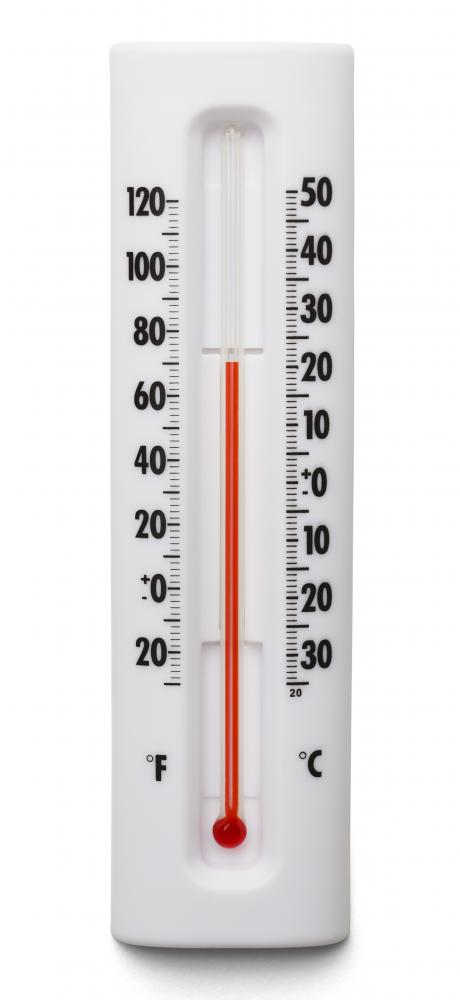What is Psychrometrics?
 Michael Anissimov
Michael Anissimov
Psychrometrics is the measurement of water vapor and heat in an air sample. It is used in the refrigeration industry, the design of clean rooms, certain manufacturing processes, and for theoretical applications. Psychrometry is a branch of thermodynamics and deals with terms like dry-bulb temperature, wet-bulb temperature, specific heat, and relative humidity. An understanding of psychrometry is a prerequisite for precise control of the humidity of contained environments. The key concept in psychrometrics is the relationship between wet-bulb temperature, dry-bulb temperature, and relative humidity.
Psychrometrics applies the well-understood relationships between humidity and temperature in air to practical problems. In psychrometrics, dry-bulb temperature refers to the temperature of air as measured by a conventional thermometer. Wet-bulb temperature is measured with a device called a hygrometer, designed to measure the temperature in a way that reflects the cooling properties of evaporating water.

A hygrometer consists of two thermometers, one attached to a wick soaked in distilled water, the other left alone. The two thermometers are spun through the air, usually using a hand-operated spinning device. The movement through the air causes the water on the wick to evaporate, lowering the temperature of the wet-bulb thermometer. The difference between the two thermometer measurements is then used to determine the wet-bulb temperature. Due to the nature of psychrometrics, any two of three values -- dry-bulb temperature, wet-bulb temperature, and relative humidity -- can be used to compute the last.

Relative humidity measures the current humidity in a space relative to the highest possible humidity the space can have before becoming saturated with water vapor. When a space is saturated with water vapor, it is said to reach its dew point, the point at which water vapor starts to condense back into water. The greater the relative humidity, the more similar the wet-bulb temperature is to the dry-bulb temperature. If no water evaporates when the hygrometer is spun due to the air being supersaturated, then the temperature of the wet-bulb cannot decrease. By contrast, absolute humidity is the measure of the actual density of water vapor in a given sample of air. Hygrometers are used in green houses, industrial spaces, and some saunas, humidors and museums.
AS FEATURED ON:
AS FEATURED ON:












Discussion Comments
I had to come up with a solution for a blast chiller being used to remove field heat from fruit. The client was having trouble with excessive icing of the FCU and the service company could only come up with "more defrosts!"
I soon realized that with the fruit coming in at up to 30degC and being loaded into the store at a rate of around 150 bins a day, operating the FCU at below 0degC was never going to work, but was totally unnecessary also.
The FCU unit was selected on a TD of around 5K,giving an ultimate 0degC at around -5 to -6C average coil temperature. However, with the warm fruit raising the room temperature to relatively high temperatures, I could exceed this selection TD and therefore the design kW of the FCU easily during the initial part of the pulldown process, without having to run it below 0degC.
This idea - along with some other bits and pieces for later in the pulldown process, meant I could totally eliminate all 'active' (ie non-refrigerating) defrosts. The service co was running a 15kW heater for one hour every three and was (unsurprisingly!) not winning. The room now works like a charm.
My problem is, while I know intrinsically what is happening and how I'm achieving the results, I have now decided to see if I can build an Excel sheet to demonstrate to my coworkers and clients what I'm on about, and to better predict and quantify potential results. This is where I'm struggling.
I have been mucking around with psych charts, but while I can work out enthalpy changes between the different points I'm achieving in the room, I am having difficulty calculating how much more load is represented by running the coil colder and forming ice on it. I realize this is a little hypothetical as it would depend on how much below zero the coil is, but even simply taking the amount of moisture removed, as indicated using the chart, and then applying a latent heat formula to that quantity, doesn't seem to stack up.
To check my basic theory, I simply took the latent heat (of vaporization) value of the water removed and subtracted that from the total 'enthalpy change' value. I then obtained the enthalpy change equivalent of dry air to try to get the value of the total sensible heat transfer. I thought that adding these two figures together would equal the total enthalpy change value, but I've gone wrong somewhere. Is my 'theory' at least, correct?
I love this stuff!
Since there is a movement of air over the wet bulb, this air is trying to make the wet cloth dry. But the movable air does not have sufficient heat to make it dry, so this air extracts heat from the wet bulb thermometer to make it dry. That is why the wet bulb temp is always less than the dry bulb temperature.
what causes the wet bulb temperature to almost always be below the dry bulb temperature?
Post your comments